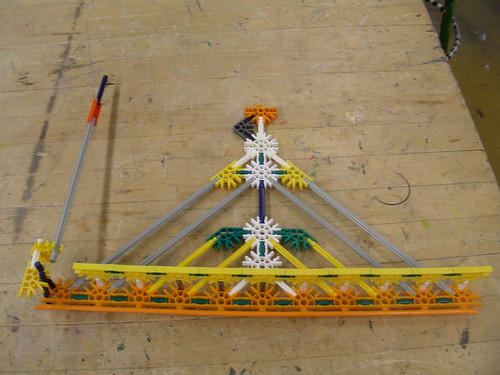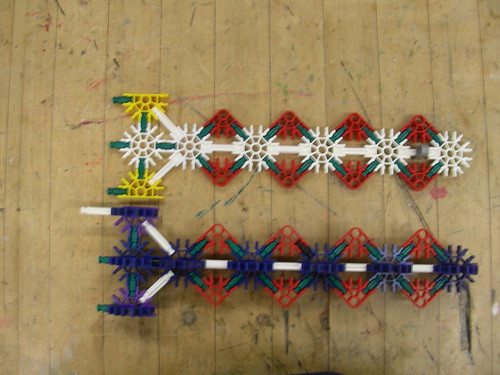My computer relies on two "processors"
The static one


and the moblie one


One numeral in inputed into the static procesor from the side of the machine.
This is the constant in my logic expression.
The next is put into the mobile processor via a "wand"

This value is the variable in my logic expression.
When both values are inputed to the processors, the motor on the side is turned on, moving the mobile processor along its track

For addition:
It will move along the track until the '0' of the mobile catches on the constant value.
The constant sticks out, and the zero hooks onto it. Then, the wand will show the value at which it is at.
The logic expression looks something like this.
input staticnum = staticnum
input mobilenum = mobilenum
zero = 0
for int zero=0; zero!= static num; zero++
{
mobilenum + = 1
}
display (mobilenum)
end
where x is the second value inputted into the moblie processor
For subtraction:
Instead of the zero hitting on the constant value, the variable hits it instead.
You read it by checking the 'subtraction display,' a seperate dispaly wand that stays at zero at all the starts
This changes the variable to be a third one, which starts at 0, not a varialbe value.
the logic loop looks more like this:
input staticnum = staticnum
input mobilenum = mobilenum
zero = 0
for int mobilenum = 0; mobilenum!= staticnum; mobilenum++
{
zero + = 1
}
display(zero)
end
This does only work if the number in the mobile processor is less than the one in the static one...
The whole process takes around 20 to 30 seconds
Comments (2)
Anonymous said
at 2:47 pm on Jan 2, 2008
Wow, this is awsome, this is the greatest thing since sliced bread!!!!
Anonymous said
at 2:47 pm on Jan 2, 2008
I know!!!
You don't have permission to comment on this page.